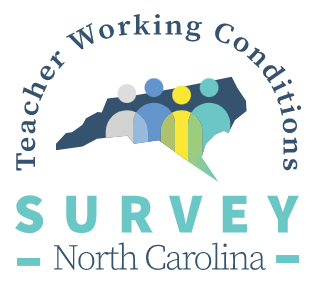
Facing continuing challenges this school year related to the COVID-19 pandemic, North Carolina teachers showed high levels of concern on a number of issues with a record-setting response rate on the latest NC Teacher Working Conditions Survey presented today to the State Board of Education.
Still, with a response rate of nearly 92 percent on the long-running survey, the percentage of teachers agreeing with the statement that their school “is a good place to work and learn” remained high, at 85%, down only two points from the last two surveys from 2020 and 2018. Since 2002, the survey has been given every two years to all educators in the state’s public K-12 schools.
“Teachers definitely wanted to have their voices heard,” Alessandro Montanari, assistant director of District and Regional Support, told the board. “Our educators really want to help us make decisions.”
In all, more than 112,000 of the 122,000 educators who were potential participants in the survey responded, with 98% of traditional and charter schools meeting a minimum threshold of at least 40% participation to generate usable data, which schools and districts apply as a part of their ongoing improvement planning. A total of 2,690 schools participated in the survey.
On an item related to potential attrition, 86% of teachers indicated that they plan to remain teaching in North Carolina.
The survey is a statistically valid and reliable instrument to assess whether educators have working conditions in their school that support effective teaching. Teachers, school administrators and other school-level educators are asked about their levels of agreement with statements focusing on 10 key areas:
- Use of time
- Community support and involvement
- Facilities and resources
- Managing student conduct
- Teacher leadership
- School leadership
- Professional development
- Instructional practices and support
- Equity
- Safety
In addition, this year’s survey included questions designed to gauge the perceptions of educators about issues related to the COVID-19 pandemic.
On a question about students’ needs for social-emotional or mental-health support compared to a typical year, 29% of educators agreed that students’ needs were “somewhat more than before” and 40% agreed that those needs were “much more than before.”
Also related to the pandemic, educators were asked to select the top five issues of most concern at the time they took the survey. Their responses: addressing disparities in student learning (24%); school staffing shortages (15%); assessing student performance and needs (13%); social emotional support for students (12%); health and safety of teachers and staff (9%).
Among all the questions asked on the survey, the highest rates of agreement pertained to several related to safety. For example, 96% of educators agreed with the statement: “Teachers in this school know what to do if there is an emergency, natural disaster (tornado, flood) or a dangerous situation (e.g., violent person on campus) during the school day.) The same rate of agreement also applied to a question about a school’s written plan in the event of a natural disaster, while 95% agreed that their school has a plan and procedures in place for responding to an active shooter or lock-down situations.
On survey items related to instructional practices and supports, educators registered high rates of agreement on teachers’ use of digital content and resources (95%), curriculum alignment with the N.C. Standard Course of Study, teachers requiring students to work hard (93%) and teachers use of assessment data to inform their instruction (90%).
Lower rates of agreement were found on questions about the sufficiency of non-instructional time for teachers, professional development opportunities tailored to teachers’ individual needs, reasonable class sizes and the frequency of bullying among students.
See highlights from the 2022 survey.
More information about this year's survey as well as results from previous years is available at nctwcs.org
|